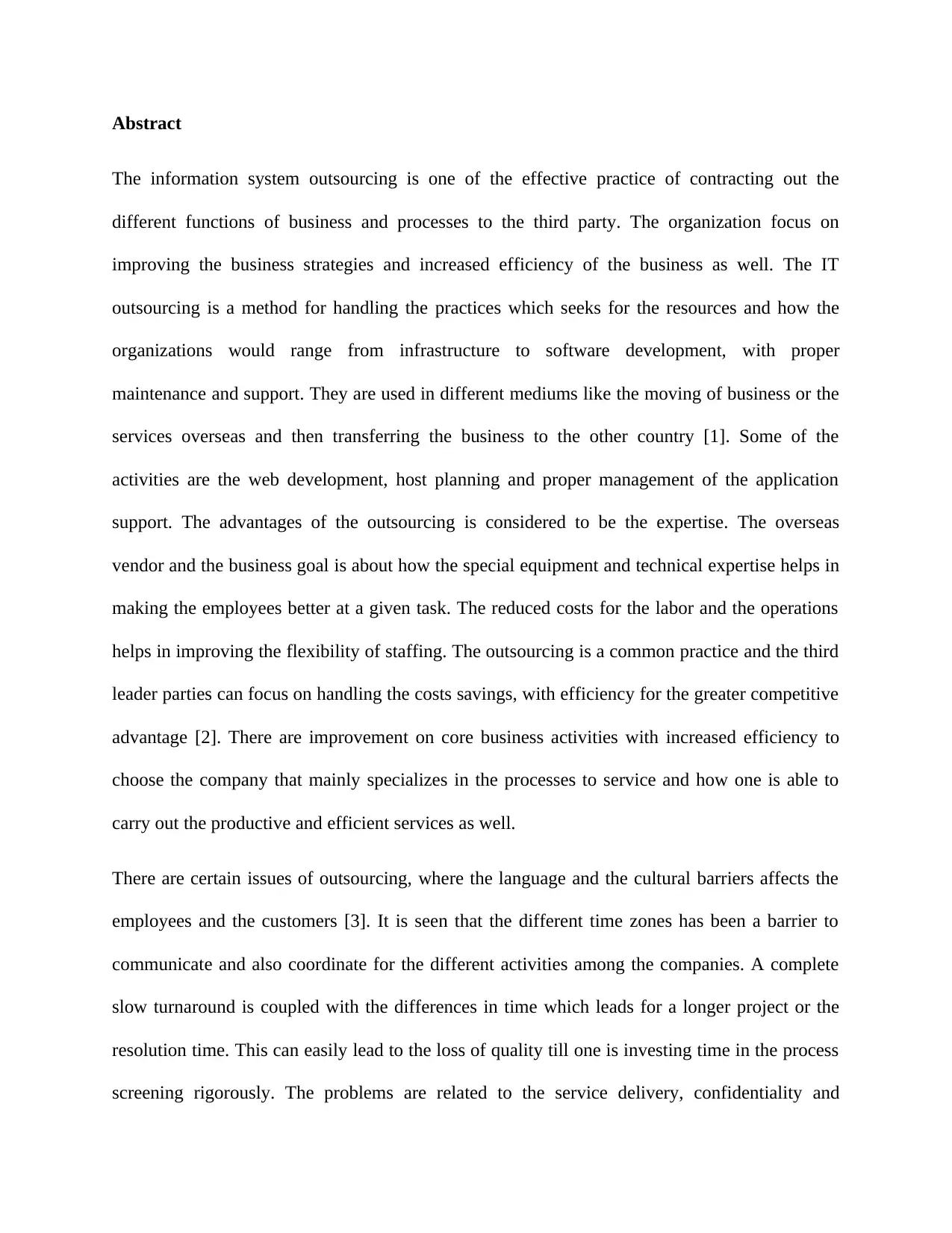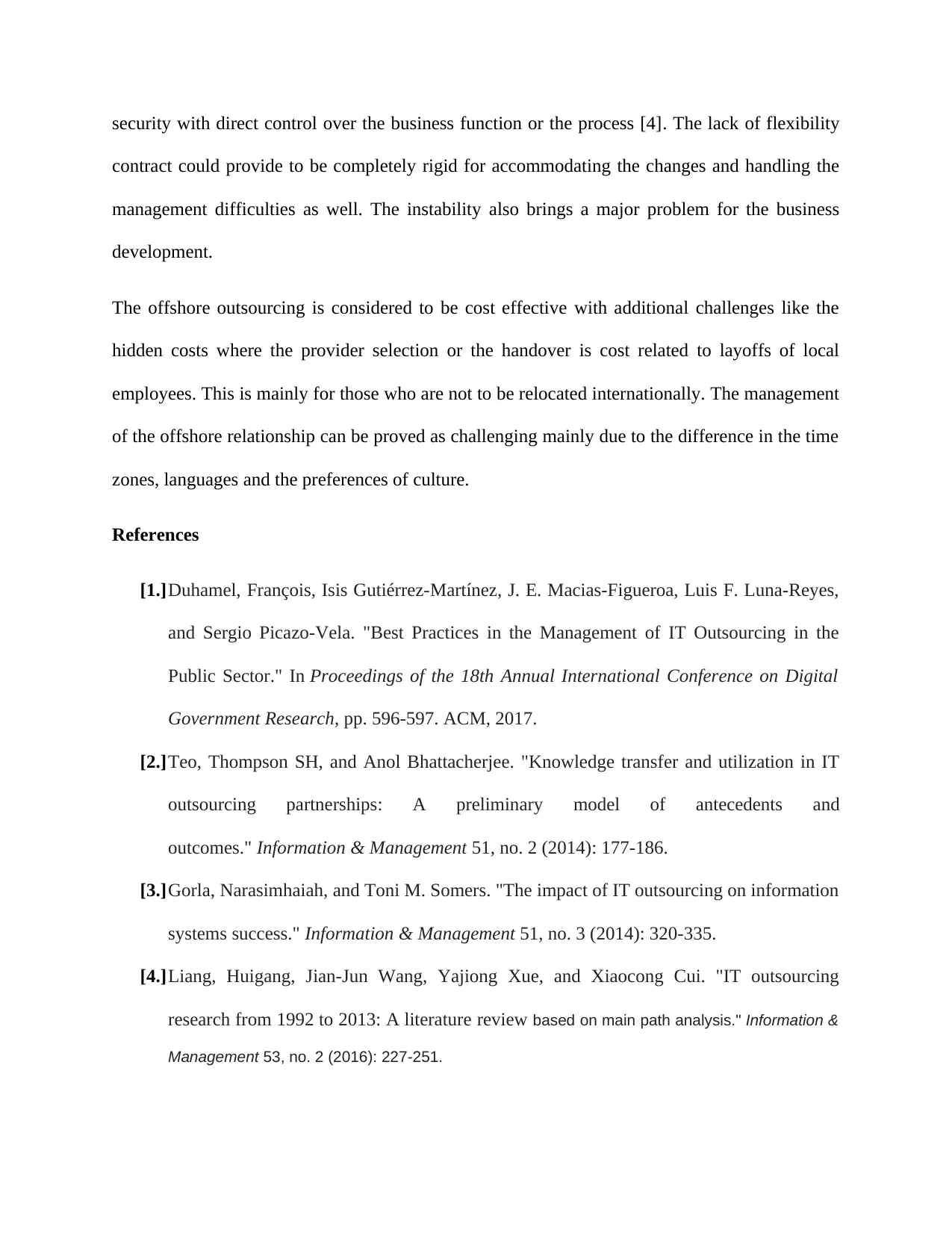Analyzing Information System Outsourcing for Business Development
VerifiedAdded on 2023/06/03
|2
|668
|266
Report
AI Summary
This report examines information system outsourcing as an effective practice for contracting out business functions to third parties, focusing on improving business strategies and efficiency. It discusses IT outsourcing methods, ranging from infrastructure to software development, including web development, host planning, and application support. The report highlights expertise, reduced costs, and improved staffing flexibility as key advantages. It also addresses potential issues such as language barriers, time zone differences, and risks related to service delivery, confidentiality, and contract inflexibility. Furthermore, the report touches on the challenges of offshore outsourcing, including hidden costs and the complexities of managing international relationships, concluding with a list of references used in the analysis. Desklib provides a platform for students to access similar solved assignments and past papers.
1 out of 2




![[object Object]](/_next/static/media/star-bottom.7253800d.svg)